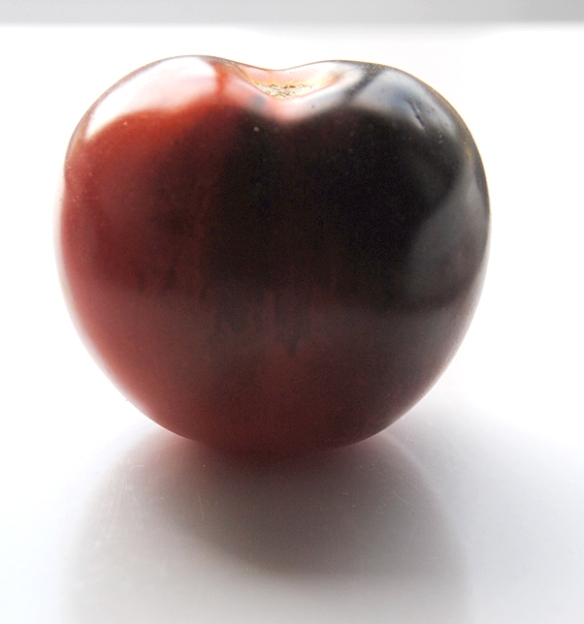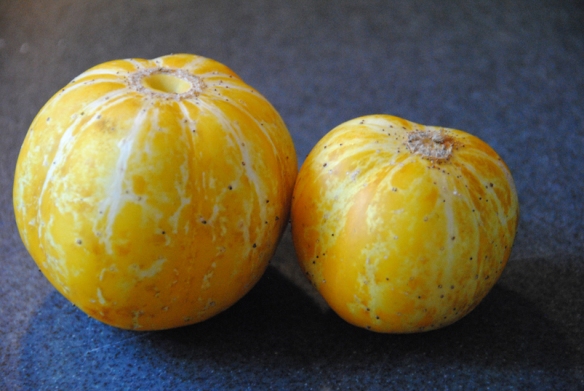Reflecting on our first CSA (community-supported agriculture) season, I think I can call the venture a success. Even my husband, who was lukewarm to the idea, looks forward to the weekly boxes and has praised the quality of the produce.
I’ve also been impressed by the variety.
Fruit has included rhubarb, strawberries, elderberries (!), raspberries watermelon, cantaloupe and more varieties of tomatoes than I can name.
I’ve managed to tuck some away for cooler months—as elderberry syrup, stewed (and frozen) rhubarb, frozen strawberries, piquante sauce and yellow plum tomato basil preserve.
And we’ve had nearly every manner of vegetable:
- mixed baby greens, head lettuce, swiss chard, parsley, purslane
- green, yellow, white and red onions, garlic scapes and garlic bulbs
- white, yellow, purple, red and sweet potatoes
- green, purple and yellow beans, pod peas
- radishes, daikon, carrots, beets, rutabaga, turnip
- broccoli, cauliflower, romanesco kale and cabbage
- sweet peppers, cucumbers, zucchini, summer squash
- spaghetti squash, butternut squash, acorn squash, pumpkins
We ate as much as we could while it was fresh. The last of the sturdier crops are in the fridge (kale, daikon, beets, Jerusalem artichoke) or cupboard (potatoes, winter squash garlic). And the rest has been picked and jarred (beans, beets, daikon) or blanched and frozen (chard, kale, peas, beans).
There were also a few surprises:
Corn on the cob: It’s a staple in southern Ontario, but I was surprised to see the first of several dozens in the CSA box. It’s been boiled and barbecued, eaten with plenty of salt and pepper, frozen for winter and made into corn relish.
Shell beans: Cooked and added to soup or packed into my lunches, on salads and leftover tomato-braised chicken.
Mini sweet peppers: I sliced these into pretty rings for a tossed salad.
Purslane: An edible weed with a slight peppery taste, it’s an interesting addition to a salad.
Purple-black heirloom tomato: Made into colourful Caprese salad along with early girl and a lovely orange tomato mistakenly identified as lemon boy (both from my garden).
Lemon cucumber: The mild-flavoured cukes were added to a Greek salad.
Watermelon radish: A pale green skin, white inner layer and bright red centre make these radishes as pleasing to look at as to eat. I served some in a Vietnamese meal of fresh spring rolls and lettuce wraps.
Pie pumpkin: I baked, pureed and baked it again into whole grain muffins.
















